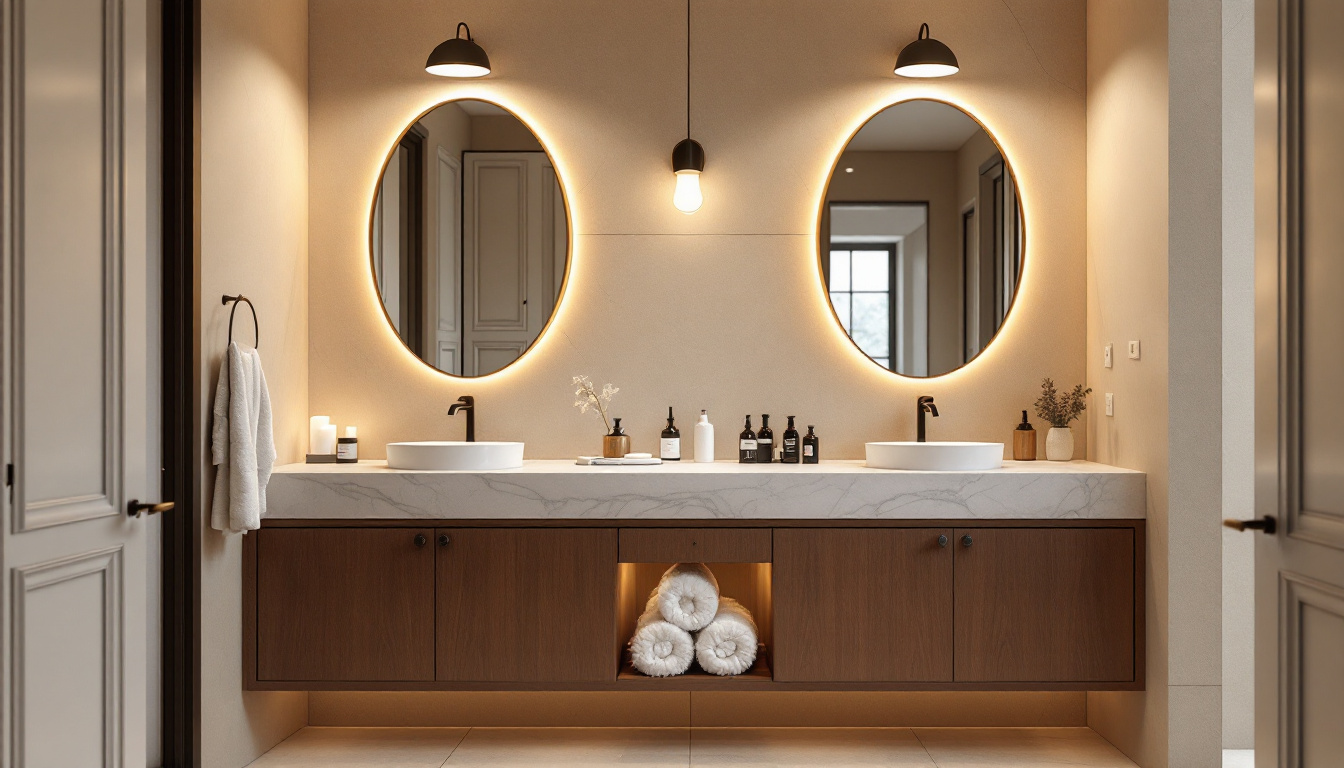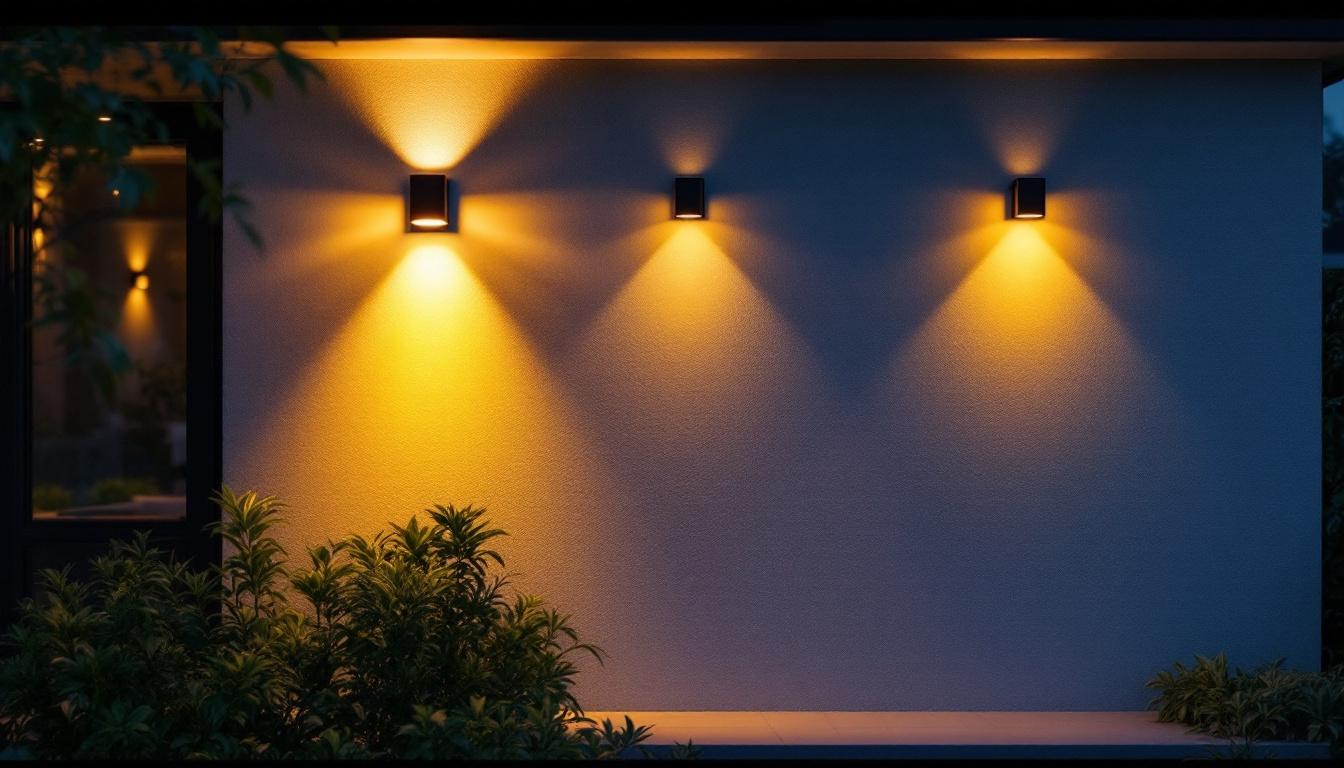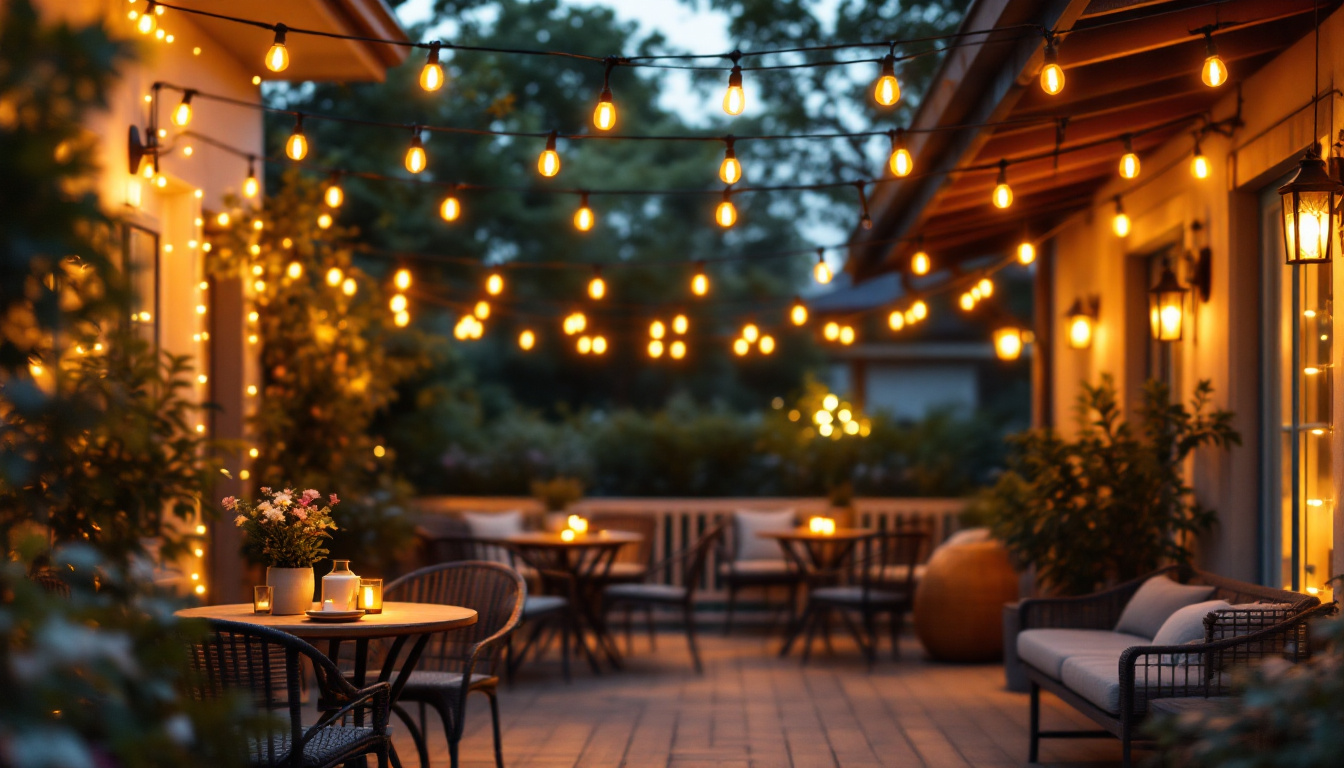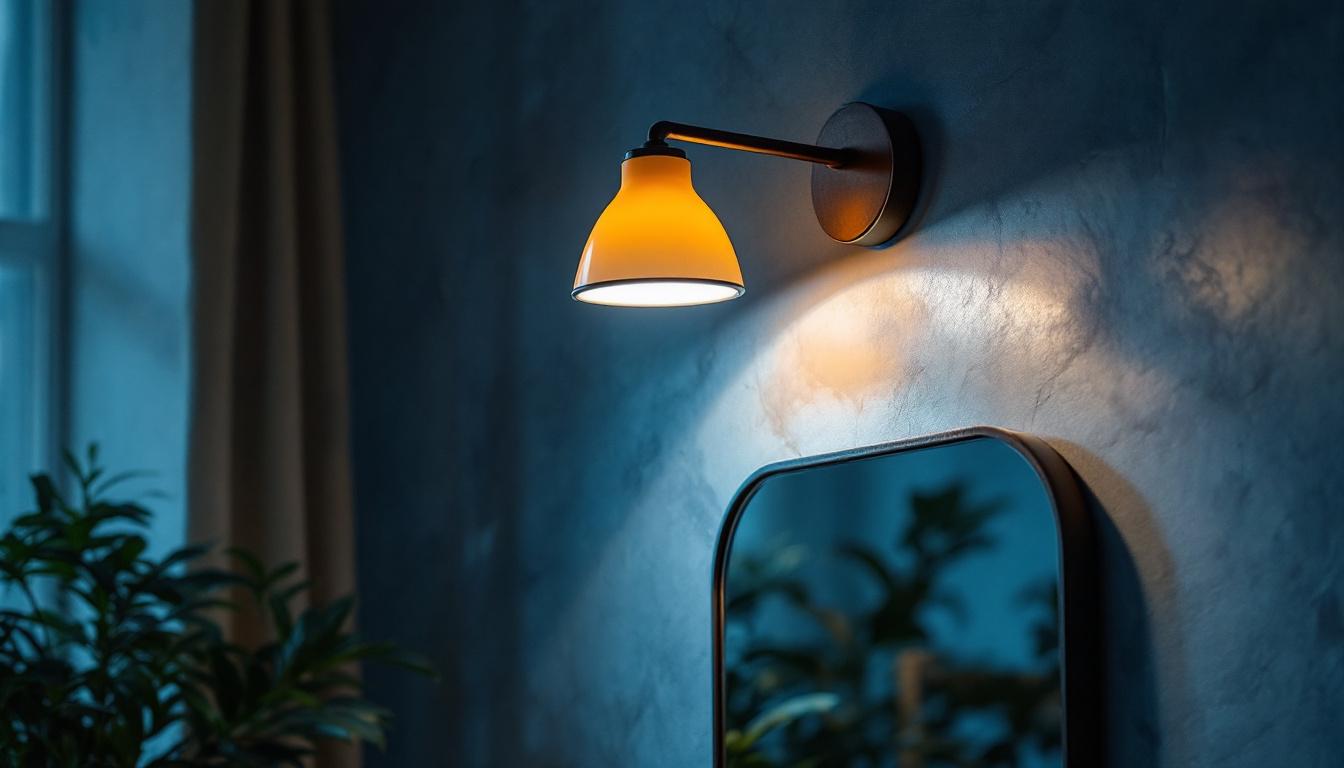
As a lighting contractor, understanding the nuances of vanity bathroom lights is essential for creating functional and aesthetically pleasing spaces. Vanity lighting plays a crucial role in bathrooms, not only for practical purposes but also for enhancing the overall ambiance. This guide will explore the key aspects of vanity bathroom lights, from design considerations to installation tips, ensuring that contractors can deliver exceptional results to their clients.
Vanity lighting serves multiple purposes in a bathroom setting. It provides essential illumination for tasks such as shaving, applying makeup, or grooming, while also contributing to the room’s overall style. Properly designed vanity lights can make a significant difference in how a bathroom feels and functions. The right lighting can enhance the ambiance, making the space feel more inviting and luxurious, while also ensuring that practical tasks are performed with ease and precision.
In addition to functionality, the aesthetic appeal of vanity lighting cannot be overlooked. The fixtures themselves can serve as statement pieces, reflecting personal style and taste. Whether opting for a minimalist design or a more ornate fixture, the choice of vanity lighting can tie together the overall decor of the bathroom, complementing colors, textures, and materials used throughout the space.
When selecting vanity lighting, contractors should be aware of the various types available. Each type has its own characteristics and applications:
The choice of light bulbs is crucial for achieving the desired effect in vanity lighting. Here are some common options:
Choosing the right light bulb not only affects the quality of light but also impacts the overall energy consumption of the bathroom. With the growing emphasis on sustainability, many homeowners are leaning towards LED options, which not only last longer but also contribute to lower electricity bills. Additionally, the color temperature of the bulbs can significantly influence the mood of the space; warmer tones create a cozy atmosphere, while cooler tones can make the area feel more vibrant and energizing, allowing for a personalized experience in the bathroom.
Design plays a pivotal role in the effectiveness of vanity lighting. Contractors should consider several factors when advising clients on their lighting choices.
The height and placement of vanity lights can significantly impact their functionality. Ideally, fixtures should be positioned at eye level to avoid casting unflattering shadows on the face. For wall-mounted lights, a height of 65 to 70 inches from the floor is generally recommended. Additionally, placing fixtures about 24 to 30 inches apart can create an even distribution of light.
Color temperature is another critical factor in vanity lighting. The Kelvin scale measures this attribute, with lower numbers indicating warmer light (yellowish) and higher numbers representing cooler light (bluish). For bathrooms, a color temperature between 2700K and 3000K is often ideal, as it mimics natural daylight and provides a flattering illumination for grooming tasks.
Vanity lights should complement the overall design of the bathroom. From modern to traditional styles, there are countless options available. Contractors should work closely with clients to understand their design preferences and recommend fixtures that align with their vision. This might include sleek chrome finishes for contemporary spaces or vintage-inspired fixtures for a more classic look.
Proper installation is crucial for ensuring that vanity lights function effectively and safely. Here are some essential tips for lighting contractors to follow.
Before installation, contractors must assess the electrical requirements of the chosen fixtures. This includes checking the wattage and ensuring that the circuit can handle the load. Additionally, it’s essential to follow local building codes and regulations regarding electrical work in bathrooms, as moisture can pose a risk.
When wiring vanity lights, it’s vital to ensure secure connections to prevent flickering or outages. Using wire nuts and electrical tape can help secure connections and protect against moisture. For wall-mounted fixtures, it may be necessary to install a junction box to accommodate the wiring safely.
After installation, testing the lights is crucial. This includes checking for proper functionality, ensuring that there are no flickers, and verifying that the light output meets the client’s expectations. A thorough inspection helps identify any issues before the project is completed.
Even experienced contractors may encounter challenges when working with vanity bathroom lights. Being prepared with solutions can help streamline the installation process.
In smaller bathrooms, space constraints can make it challenging to install traditional fixtures. In such cases, integrated LED mirrors or compact wall sconces can be excellent alternatives. These options provide adequate lighting without overwhelming the space.
Shadows can be a common problem in vanity lighting, especially if fixtures are not placed correctly. To combat this, contractors should consider using multiple light sources. Combining overhead lighting with wall-mounted fixtures can help minimize shadows and create a more balanced illumination.
Clients are increasingly concerned about energy efficiency. Contractors can address this by recommending LED options, which consume less energy and have a longer lifespan compared to traditional bulbs. Additionally, discussing the benefits of dimmer switches can help clients control their lighting usage and save on energy costs.
Staying updated on the latest trends in vanity lighting can help contractors offer clients fresh ideas and innovative solutions. Here are some current trends to consider.
smart lighting technology is gaining popularity in residential settings, including bathrooms. Contractors can recommend smart bulbs or fixtures that can be controlled via smartphone apps or voice commands. This allows clients to adjust brightness and color temperature to suit their preferences and routines.
statement lighting fixtures are becoming a focal point in bathroom design. Bold designs, such as oversized pendants or artistic sconces, can add personality and flair to a space. Contractors should encourage clients to think outside the box and consider unique fixtures that reflect their style.
On the other end of the spectrum, minimalist designs are also trending. Simple, clean lines and understated fixtures can create a serene and uncluttered look. This approach often emphasizes functionality while maintaining a modern aesthetic.
Educating clients on the maintenance and care of their vanity lights can extend the lifespan of the fixtures and ensure optimal performance.
Dust and grime can accumulate on light fixtures, diminishing their brightness. Regular cleaning is essential to maintain their appearance and functionality. Clients should be advised to use a soft cloth and mild cleaning solution to avoid damaging the finish.
Clients should be informed about the importance of replacing burnt-out bulbs promptly. This not only ensures consistent lighting but also prevents strain on the electrical system. Providing guidance on the appropriate bulb types and wattages can help clients make informed decisions.
Encouraging clients to periodically inspect their vanity lights for signs of damage or wear can prevent larger issues down the line. This includes checking for frayed wires, loose connections, or any signs of moisture damage, particularly in bathrooms where humidity is a concern.
Vanity bathroom lights are a vital component of any bathroom design, providing both functionality and style. For lighting contractors, understanding the various types, design considerations, installation tips, and trends is essential for delivering high-quality results. By staying informed and adapting to client preferences, contractors can create beautiful and practical bathroom spaces that enhance the daily routines of their clients.
With the right knowledge and approach, contractors can navigate the complexities of vanity lighting and ensure that each project is a success. By prioritizing quality, efficiency, and aesthetics, they can help clients achieve the bathroom of their dreams.
Ready to elevate your lighting projects with the highest quality vanity bathroom lights? Look no further than LumenWholesale, where we provide lighting contractors with spec-grade lighting products at unbeatable wholesale prices. Say goodbye to local distributor markups and hello to superior lighting solutions that meet the most rigorous industry standards. With our hassle-free bulk buying and free shipping, you can stock up on premium lighting without any hidden fees. Enhance your bathroom designs with the perfect blend of quality, affordability, and convenience at LumenWholesale. Wholesale Lighting at the Best Value is just a click away.

Discover how lighting contractors can enhance their projects with external wall lights equipped with photocells.

Discover the pivotal role patio light strings play in transforming outdoor spaces and why savvy lighting contractors consider them essential.

Discover the essential insights into industrial vanity lights with answers to lighting contractors’ most common questions.

Discover effective strategies and proven methods for lighting contractors to optimize commercial lighting control systems.